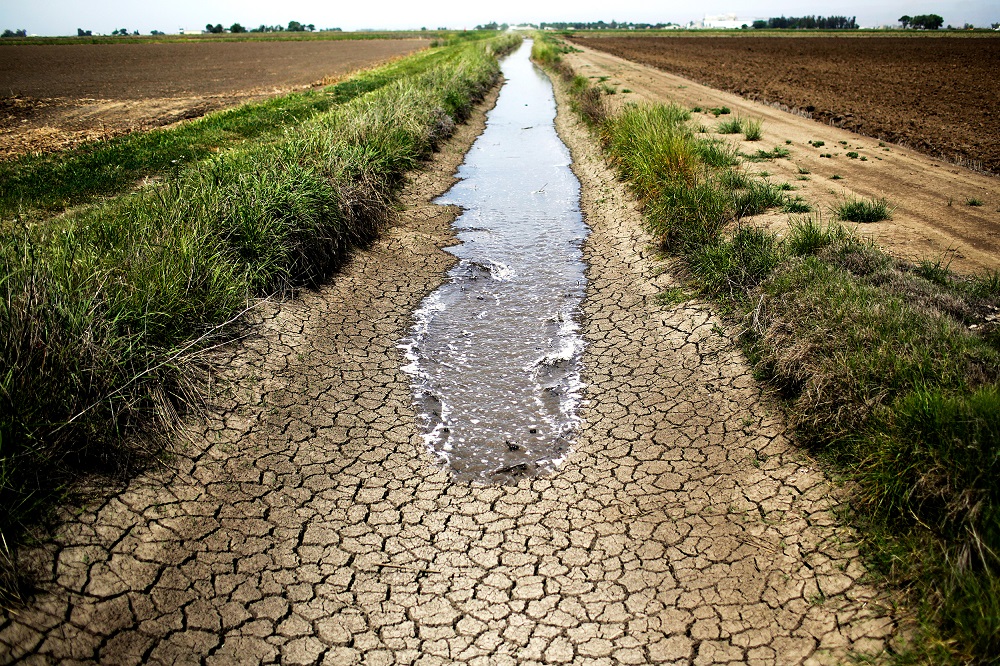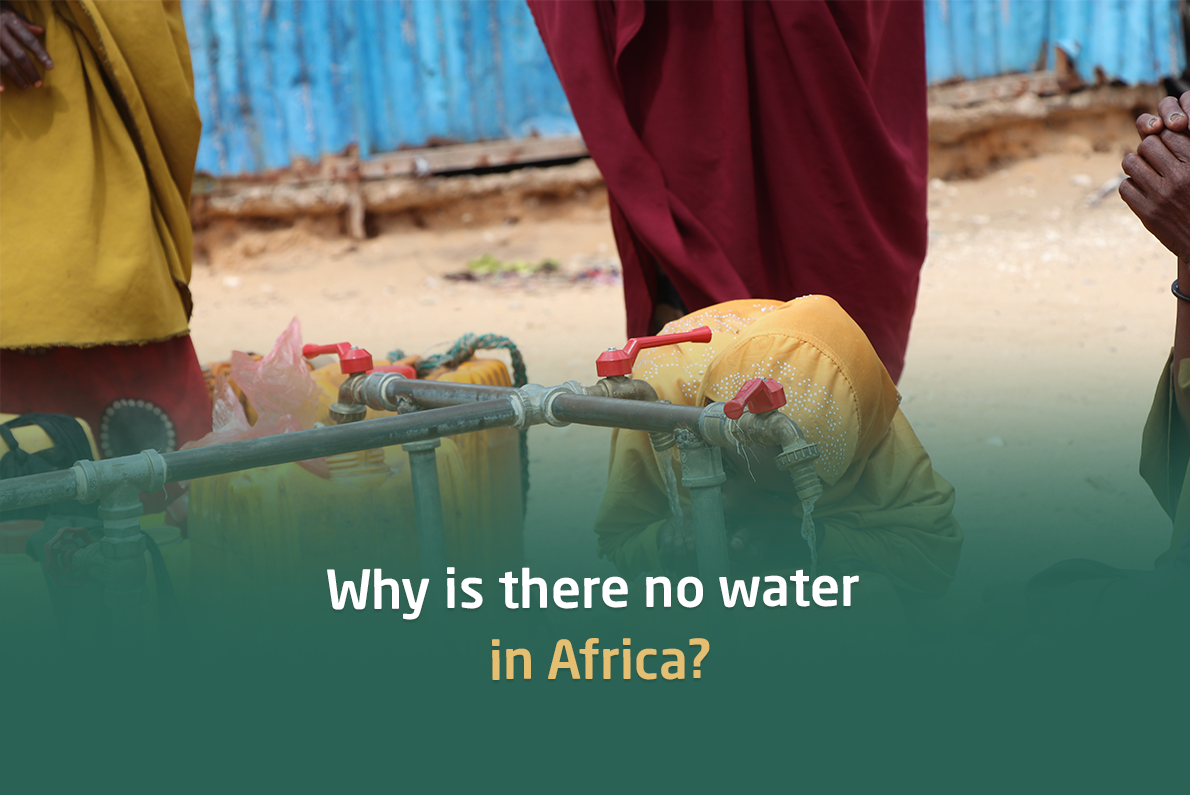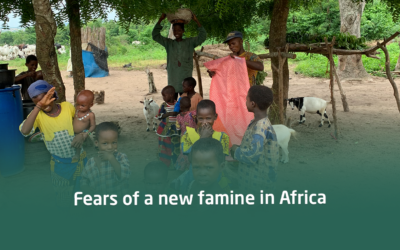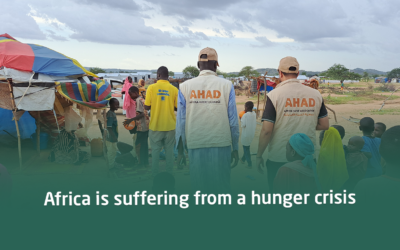Why there is no water in Africa
Africa is facing a huge problem of water shortage despite the fact that the continent has enormous water resources. This problem is not simple and is due to a combination of factors that interfere with each other.
Here I will explain some of the main reasons for the lack of water in some regions of Africa:
Drought and climate change in Africa
The issue of drought and climate change is one of the most prominent factors negatively affecting the availability of water in Africa. The climatic changes that the world is experiencing are significantly affecting the weather patterns on the African continent, exacerbating the problem of water scarcity. Below is a detailed explanation of how drought and climate change affect water resources in Africa:
Changing weather patterns
One of the most notable effects of climate change is the changing patterns of seasons and rainfall. In many African regions, the timing of the rainy seasons has become irregular, and sometimes the amount of precipitation that falls is significantly reduced. This change directly affects agriculture, which is the main economic activity in many African countries, and leads to a decline in crop production and an increase in hunger rates.
Increasing droughts
With rising temperatures and a decrease in the amount of precipitation, droughts are becoming more frequent and prolonged. This leads to depletion of surface water sources such as rivers and lakes, and increases the pressure on groundwater resources. For example, the Lake Chad Basin, which was once one of the largest bodies of water in Africa, is experiencing a significant contraction of its area due to constant drought.
Melting of ice and snow
In mountainous areas such as the Atlas Mountains in North Africa and the mountains of Ethiopia, rising temperatures cause ice and snow to melt more quickly, hindering the regeneration of rivers that rely on snowmelt as their main source of water. This causes a shortage of flowing water in rivers that feed large areas of agricultural land and urban areas.
Salinization of soil and water
Increasing temperatures lead to the evaporation of larger amounts of water from the soil, leaving behind salt deposits. This salinization can make land unsuitable for agriculture and make it more difficult to obtain potable water and agricultural uses.
Impact on underground reservoirs
As a result of the lack of rainfall, the population is increasingly dependent on groundwater. This leads to the depletion of underground reservoirs at rates faster than their ability to regenerate. Also, a decrease in the water table can lead to the invasion of sea water, which causes salinization of these precious resources in coastal areas.
Decline of biodiversity
Drought and climate change are harming biodiversity in Africa, as animals and plants suffer from a lack of water and food. The shrinking of wet areas and water bodies affects the organisms that depend on them, which leads to the degradation of natural ecosystems.
Migration and displacement
Drought and climate change are leading to the displacement of populations from arid regions to more fertile areas, which increases the pressure on Water Resources in these receiving areas. This displacement can cause water conflicts between different communities and aggravate humanitarian situations.
Addressing the problem of drought and climate change in Africa requires the implementation of multiple strategies that include enhancing adaptation to climate change through improved water management, developing water infrastructure, and supporting research related to sustainable agriculture technologies. In addition, regional and international cooperation should be strengthened to help African countries effectively meet these challenges and achieve sustainable water security.

Mismanagement and corruption and their impact on Water Resources in Africa
The management of Water Resources in Africa suffers from many challenges, foremost of which is mismanagement and corruption. These problems play a decisive role in exacerbating the water crisis on the continent. The following is a detailed explanation of how mismanagement and corruption affect water resources in Africa:
Dilapidated and inadequate infrastructure
The countries of Africa often lack adequate investment in water infrastructure, which leads to outdated and dilapidated water distribution networks. Leaky pipes and unusable tanks can lead to the loss of large volumes of water before it reaches consumers.
Governments often lack effective plans to manage water resources sustainably. The absence of strategic planning makes it difficult to adapt to climate changes and population growth, which leads to insufficient available water to meet growing needs.
Financial and administrative corruption
Corruption in government sectors leads to the diversion of funds allocated for the improvement of water infrastructure into the pockets of corrupt officials. This financial manipulation deprives the population of the benefit of vital projects that could improve the quality and availability of water.
Sometimes contracts for the construction and operation of infrastructure are awarded to incompetent companies due to bribes and nepotism, which leads to the implementation of low-quality or incomplete projects. This, in turn, reinforces the failure of water systems to meet the needs of the population.
Unfair distribution of resources
Mismanagement can lead to an unfair distribution of Water Resources, where the wealthy get clean water and in sufficient quantities, while poor communities suffer from water shortages. This inequality increases the gap between social classes and promotes tensions and conflicts.
Lack of maintenance and follow-up
The lack of an effective system of infrastructure maintenance leads to its rapid deterioration. Leaks and technical problems may remain without repair for long periods, exacerbating the water crisis and leading to significant losses.
The absence of independent oversight and transparency in project management makes it difficult to hold accountable those responsible for failures or corruption. This reinforces the culture of impunity and further complicates the problem.
Weak institutions
Many African countries lack strong and effective institutions that can efficiently manage water resources. Weak institutional structures and human capacities hinder the implementation of policies and programs that can promote sustainable water management.
Far-reaching effects
Mismanagement of Water Resources has significant economic impacts, as it affects agriculture and industry, leads to a deterioration in economic growth and an increase in poverty rates.
The lack of clean water and sanitation directly affects public health, increasing the spread of water-related diseases such as cholera and diarrhea, and placing an additional burden on already struggling health systems.
Addressing the problem of mismanagement and corruption in the management of Water Resources in Africa requires the adoption of comprehensive measures to enhance transparency and accountability. It is necessary to develop effective management systems, implement strict anti-corruption policies, invest in building the capacity of institutions and infrastructure. Cooperation between governments, the private sector, and civil society can contribute to better water resources management and sustainable development on the continent.

Rapid population growth
Africa is experiencing population growth rates among the highest in the world, as the population is growing by leaps and bounds. This accelerated population growth puts a huge strain on the available water resources. The following is an explanation of the effects of this population growth on Water Resources:
Increased demand for water
As the population grows, the demand for water for personal use such as drinking, cooking, and cleaning increases. This puts additional pressure on the available water resources that may already be limited.
The agricultural sector is the largest consumer of water in Africa. As the population increases, the demand for food increases, which requires the expansion of agricultural land and the use of more water for irrigation. This leads to a faster depletion of Water Resources.
With industrial development combined with population growth, the need for water in industrial processes increases. Industries require large amounts of water for cooling, cleaning, and production processes, which increases the pressure on water sources.
Urbanization and lack of infrastructure
Many rural residents are moving to cities in search of job opportunities and better services. This rapid urbanization is putting additional strain on urban water systems that are often ill-equipped to cope with significant overpopulation. Current systems may be unable to provide sufficient water or treat wastewater effectively.
Many African cities suffer from inadequate water infrastructure. Outdated pipes, lack of treatment plants, weak distribution networks make it difficult to meet the growing demand for water.
Conflicts and wars
Armed conflicts and wars significantly affect the availability and management of Water Resources in Africa. These conflicts lead to the destruction of infrastructure and disruption of the provision of services. The following is an explanation of the effects of conflicts on water:
Destruction of infrastructure
Water infrastructure, including pipes, pumps, and treatment plants, are often targets of attacks in armed conflicts. This destruction hinders the provision of water to the population and increases the difficulty of its maintenance and repair.

Disruption of planning and development
Conflicts disrupt long-term planning and development. In conflict zones, it becomes difficult to implement infrastructure development or improvement projects. This leads to the deterioration of basic services including water supply.
Population displacement
Armed conflicts are forcing residents to be displaced from their homes and move to other areas. This displacement puts additional pressure on Water Resources in receiving areas, which may be ill-equipped to cope with a sudden population influx.
Pollution
Pollution is a major challenge for Water Resources Management in Africa. Water sources are polluted by industrial and agricultural waste and untreated sewage, which reduces the amounts of usable water. The following is a breakdown of the effects of pollution:
Industrial waste
The discharge of industrial waste without adequate treatment into rivers and lakes pollutes the water with harmful chemicals, heavy metals, organic pollutants. This makes the water unsuitable for drinking or agricultural use.
Agriculture
The intensive use of pesticides and chemical fertilizers in agriculture leads to the runoff of polluted water to water sources. This pollution can cause deterioration of water quality and affect the health of the population and animals.
Sanitation
Many areas lack sewage treatment facilities. The discharge of wastewater directly into water sources leads to its contamination with bacteria, viruses and parasites, which causes the spread of diseases.
Lack of awareness and education
The lack of awareness of the importance of conserving water resources and rationalizing their use is a major challenge in water management in Africa. Education and education can have a significant impact in improving water management. The following is an explanation of the importance of awareness and education:
Education about sustainable use
Organizing awareness programs for communities on how to use water sustainably can reduce waste and promote the conservation of Water Resources.
Education in schools
– **School curriculum**: integrating water conservation topics into the school curriculum can instill environmental awareness in younger generations, leading to a change in use behaviors in the future.
Community cooperation
– **Local initiatives**: encouraging local communities to adopt sustainable water management practices through community-based initiatives can enhance awareness and reduce resource depletion.
You can visit the AHAD website to find out more about the projects it offers
ALSO READ
WHAT THE FOOD BASKET CONTAINS IN AHAD
Join us in our message




